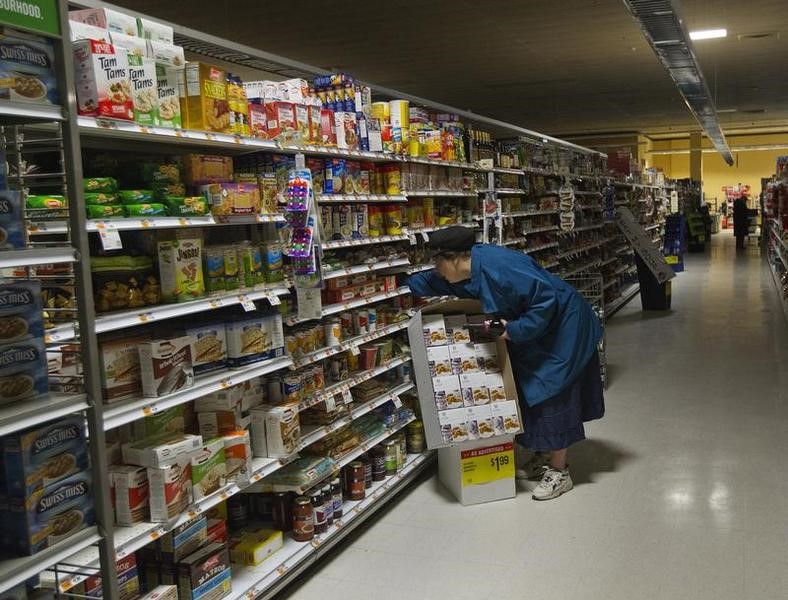By Lucia Mutikani
WASHINGTON (Reuters) - U.S. consumer prices rebounded in February as gasoline prices rose for the first time since June, and there were also signs of an uptick in underlying inflation pressures, which could keep a June interest rate increase on the table.
Signs of inflation are likely to be welcomed by Federal Reserve officials. They are also a good omen for an economy that has stumbled in recent months under the weight of a harsh winter, weak global demand, a strong dollar and the now-settled labour dispute at one of the country's busiest ports.
The Labor Department said on Tuesday its Consumer Price Index increased 0.2 percent last month after declining 0.7 percent in January. That ended three straight months of declines in the index.
In the 12 months through February, the CPI was unchanged after slipping 0.1 percent in January, as the impact of an earlier plunge in global crude oil prices lingers.
The dollar pared losses against a basket of currencies on the data, while U.S. stock futures trimmed gains. Prices for U.S. Treasury debt fell.
Fed officials have long viewed the energy-driven weakness in inflation as transitory. The U.S. central bank, which has a 2 percent inflation target, has kept its short-term interest rate near zero since December 2008.
Fed Chair Janet Yellen said last week policymakers could raise interest rates when they had "seen further improvement in the labour market" and were "reasonably confident that inflation will move back to its 2 percent objective over the medium term."
The so-called core CPI, which strips out food and energy costs, increased 0.2 percent in February after a similar gain in January. In the 12 months through February, the core CPI rose 1.7 percent, the largest increase since November.
Economists say the Fed could tighten monetary policy even with the CPI running low as long the core CPI was not decelerating.
Crude oil prices fell 60 percent between June and January on fears of a global oil glut and the refusal of Saudi Arabia and other OPEC members to cut output. In February, Brent stabilized at around $60 and U.S. crude at around $50.
Last month, domestic gasoline prices rose 2.4 percent, the largest increase since December 2013, after tumbling 18.7 percent in January. Gasoline prices had declined for seven straight months.
Food prices increased 0.2 percent. Elsewhere, shelter costs increased 0.2 percent, accounting for about two-thirds of the increase in the core CPI. Shelter costs had advanced 0.3 percent in January.

Apparel prices rose 0.3 percent in February after a similar gain in January. There were also increases in airfares, new motor vehicle and used cars and trucks prices. However, the cost of medical care services declined for the first time since 1975.